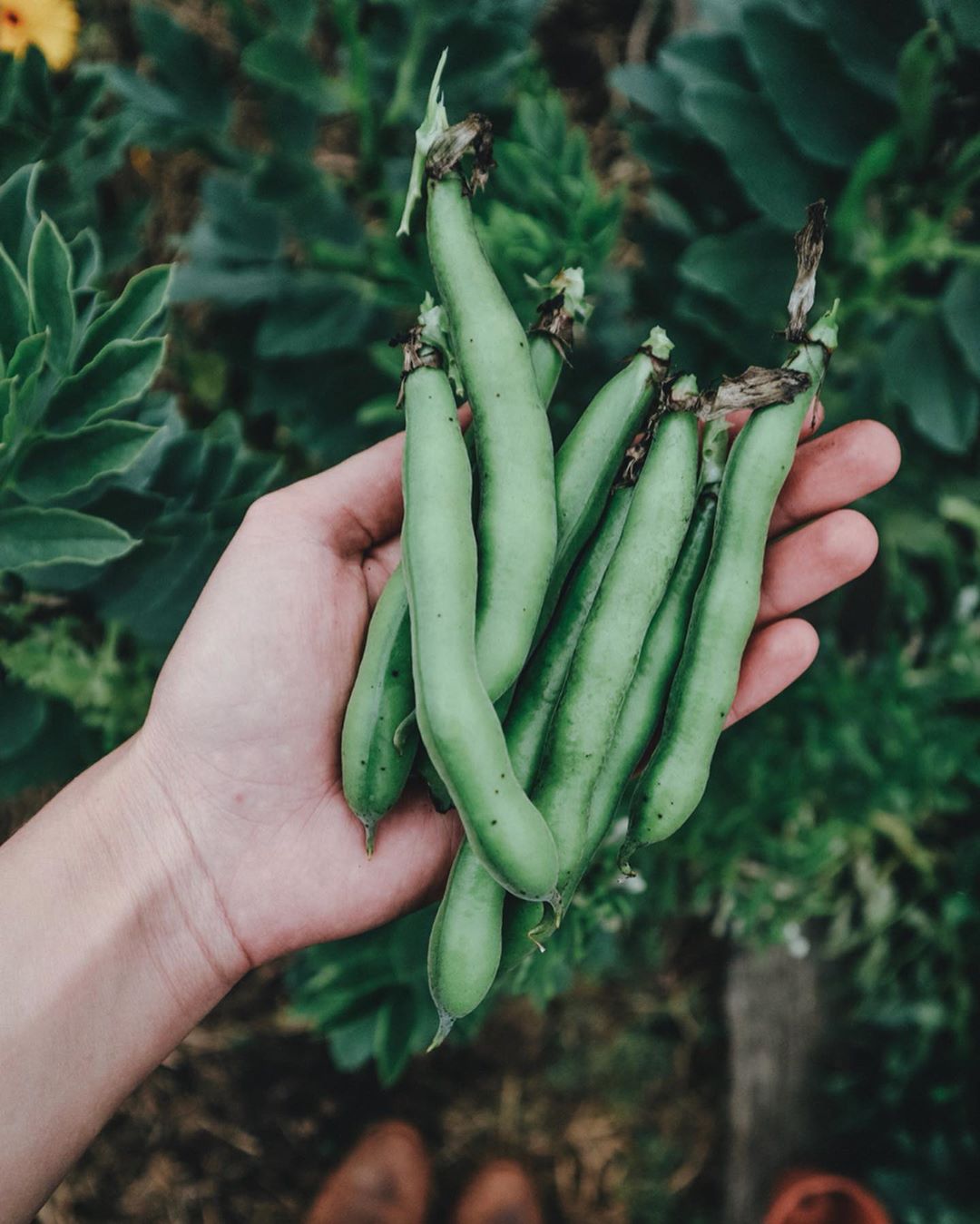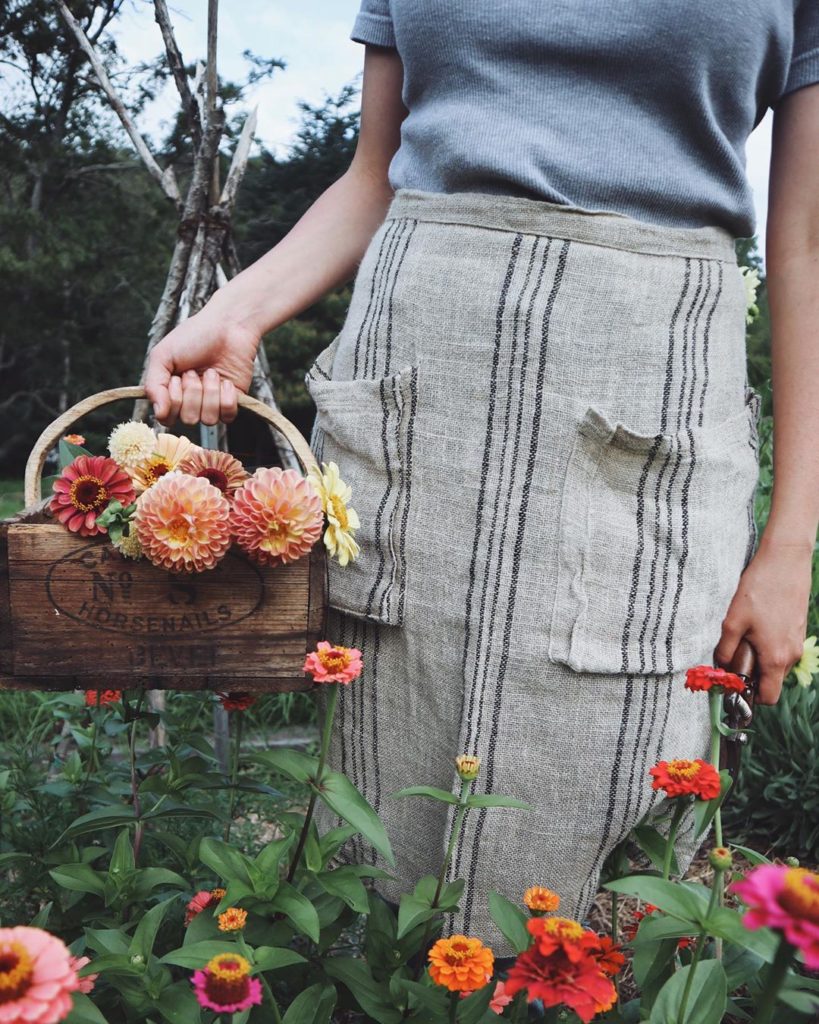7 Tips for Growing your Own with Jemma Thompson

Fruit, vegetable and flower grower, Jemma Thompson, lives a modern day good life. On a farm in a small Australian town - think rolling green hills and ocean views - she has created her own little kitchen garden. Here she shares her beautiful garden photography and her inspiring tips for growing your own food.

Growing up in a city, Jemma grew a small crop of tomatoes, greens and herbs in a few raised garden beds. But it was only when she and her husband moved to his family farm that growing food on a larger scale suddenly became an exciting possibility.
On their own small patch – a garden next to a chestnut tree – they keep animals, have an orchard and grow vegetables.

At the moment, as the days in the southern hemisphere grow colder, it’s all about hearty winter veg like cabbage, broccoli, cauliflower, leeks and onions. In summer months, berries, beetroot, rhubarb and radishes make up the majority of their harvest. Jemma also grows beautiful cut flowers, creating posies that she sells at a local café.

What does Jemma like best about growing her own food? “It feels good to be less reliant on going to the shops,” she says, “And everything tastes so much fresher!
“I also love going into the garden to pick vegetables and herbs, taking inspiration from whatever combination is growing at the time to come up with a plan for dinner.”
Looking to create your own little veg patch? Here are Jemma’s tips for getting started with growing your own food...
Jemma’s 7 Tips for Growing your Own
Tip #1
Learn from the experts
Any aspiring grower should read “Grown and Gathered” by Matt and Lentil Purbrick. It covers a lot of the basics and is incredibly inspiring.

Tip #2
Gather the "growing your own" basics
I started with a couple of old bathtubs, which we filled with soil and in which I grew a few small things.
You don’t need very much space to grow bits and pieces of your own food – just a small little patch or a handful of pots. The most important things are good quality soil and compost, and heritage seeds where possible.

Tip #3
Plant what you like to eat
Grow a couple of things you love to use a lot of in the kitchen. If you have a wonderful harvest of something that you turn out not to like or something you don’t use a lot of, it isn’t quite as rewarding.
I love making tomato chutney from my tomatoes because we have it on our eggs in the morning, as well as with other meals. Last season I nearly made enough to last the year and it was very satisfying.
I also love to make rice paper rolls with the salad and herbs I have growing, as well as vegetable fritters, pesto, and rhubarb compote to have on yoghurt.

Tip #4
Start small
There’s a piece of advice in Grown and Gathered that has always stuck in my head: give half the plants twice the love and get four times the reward.
Basically, it’s much better to grow a smaller number of plants and to look after them properly, than to grow large amounts and not give them the attention they need. I know this from experience!
Starting small means you can also end up with more produce in the long run because the plants produce a lot more when well cared for.

Work on your timing
Try to succession sow so that you always have a consistent harvest of vegetables. Otherwise you might end up with a rush of cauliflower one week and then no more cauliflower for the rest of the season.
This is a skill I’m still learning. I’ve actually found timing to be the most difficult part of growing my own produce.

Tip #6
Accept that things don't always go to plan
As a grower you have to have patience and accept when things don’t work out quite as you'd hoped. A lot of things didn’t go to plan in my garden this summer, despite all the time I spent planning and preparing!
I bought a little plastic greenhouse, which blew over in the wind and destroyed my seedlings – twice! We also were in the middle of a drought, which meant a lot of plants didn’t grow very well. And then the Australian bushfires came right up to our town – so my garden was certainly not the centre of my attention.
I had to learn not to be disappointed in the way the season turned out and to be grateful for the plants I did manage to grow.

Tip #7
Learn as you go
Making mistakes (and learning from them) is all part of the growing your own process. I think it takes a while to learn what is best for you and your garden. I still don’t necessarily feel like I have green fingers – a lot of the things I grow don’t go to plan – but I am learning bit by bit.


A big thank you to Jemma for sharing her growing your own tips and her beautiful photography with us. Be sure to keep up with her garden progress over on Instagram.
